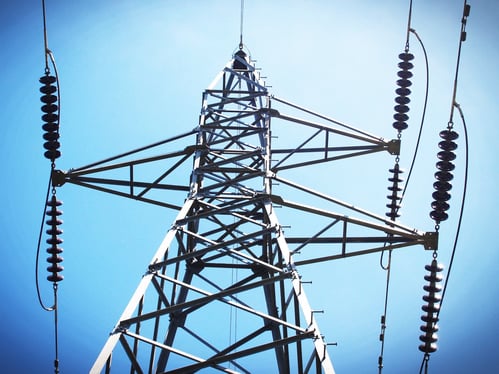The threat landscape continues to evolve and expand, and hackers are finding success using social...
Critical Infrastructure Cybersecurity: Secure the Grid & Water Systems

Should the power grid, water, or wastewater systems suffer a cyber attack, life as we know it would be vastly altered? Hospitals would rely on generators, supermarkets would shutter, and drinking water would no longer be a matter of turning a spigot. It may come as something of a surprise, but more than 20 percent of all cyber-attacks targeted the North American energy sector in 2022. That’s why it’s crucial to understand critical infrastructure cybersecurity and know how to prepare for a cyber attack on the power grid.
What is Critical Infrastructure Cyber Security?
Critical infrastructure security involves the protection of digital systems linked to essential services. When these necessities for a viable economy and basic needs such as food, water, and electricity are threatened by a cyber attack, the potential losses put wide-reaching populations in harm’s way. These are considered vital industries that require critical infrastructure cybersecurity protections.
- Communications Sector
- Critical Manufacturing
- Defense Industrial Base
- Emergency Services
- Energy Production
- Financial Services
- Food and Agriculture
- Government Facilities
- Healthcare and Public Health
- Transportation Systems
- Water and Wastewater Systems
It’s important to keep in mind that these infrastructure sectors involve both governmental and privately owned operations. But services such as energy production typically overlap, with digital assets and files cross-pollinating networks. That makes them increasingly vulnerable because a data breach or malware infection on one side can disrupt both.
How To Prepare for a Water System Cyber Attack
An advisory issued by the Federal Bureau of Investigation (FBI), Cybersecurity and Infrastructure Agency (CISA), Environmental Protection Agency (EPA), and National Security Agency (NSA) indicates threat actors are making ongoing efforts to undermine the integrity of water and wastewater systems in the U.S. The governmental agencies assert that cyber criminals target America’s informational technologies, networks, operational technology, and endpoint devices to gain control over essential infrastructure. Tactics such as the following have been identified.
- Spearphishing: Threat actors continue to exploit poorly trained staff members who lack cyber security awareness training.
- Internet Connection Exploitation: Remote workforces have enabled hackers to infiltrate devices using public Wi-Fi rather than secure virtual private networks.
- Zero-Day Attacks: Government agencies with outdated and vulnerable applications and firmware are at risk of zero-day attacks.
Discussion of critical infrastructure cybersecurity in water and wastewater systems is not hypothetical. Hackers successfully deployed ransomware against a California wastewater system in August 2021, a Maine facility in July 2021, and a Nevada plant was attacked in March of the same year. There are upwards of 153,000 public water systems and over 16,000 publicly owned treatment plants in the U.S. If even one were taken down by an advanced persistent threat, widespread illness and fatalities would occur.
Cyber Attack on Power Grid
A reported “1,665 security incidents involving the U.S. and Canadian power grids occurred last year. That count included 60 incidents that led to outages, 71 percent more than in 2021,” according to Politico. The report also indicates the U.S. is on pace to exceed the record number of cyber attacks on the power grid set in 2022. That’s why it’s mission-critical to know how to prepare for a cyber attack on the energy sector.
Power grid insiders, tasked with defending the critical infrastructure from a cyber attack, point to operational technologies (OT) as, perhaps, its weakest link. That’s primarily because OT involves using both hardware and software to operate industrial equipment. Elements such as logic controllers, distributed control networks, and supervisory control and data acquisition (SCADA) systems oversee physical processes.
Although OT systems are typically complex, they are a logical insertion point for nation-state threat actors. A ransomware attack would allow rogue nations to cripple portions of the U.S. power grid, causing widespread blackouts. The notorious Solar Winds hack that impacted 18,000 customers reportedly damaged elements of the grid. A hacking group bent on wreaking havoc could have taken control of substations, control centers, or power-generating plants.
A Cybersecurity Consultant Can Prepare You for A Cyber Attack on Power Grid
At CyberTeam, our managed IT and cybersecurity consulting experts have the experience and technology to protect your company from infrastructure disruptions. In terms of power grid interruption, these involve backing up your critical data and utilizing cloud capabilities that allow you to work remotely from areas unaffected by power losses. If you do not have a disaster recovery plan in place that accounts for critical infrastructure disruption, schedule a consultation today, and let’s get the process started.





